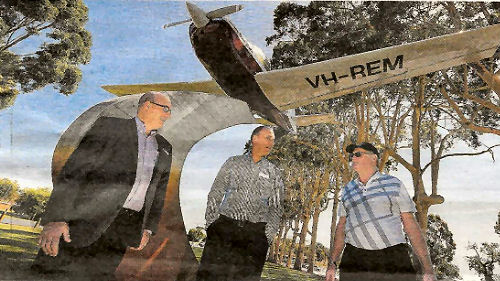In the 2015 Budget, the Australian Government announced that it would be rebalancing the assets test limits to improve the fairness and affordability of the pension system. These changes have been passed by parliament and will commence from 1 January 2017.
More than 90 percent of pensioners will either be better off or have no change to their pension under the rebalanced assets test. There will be no change to the existing assets test exemption for the family home.
Assessable assets include things like bank accounts, shares, investment properties and cars.
The assets test affects service pension and income support supplement, as well as pensions paid under the social security law such as age pension. Compensation payments such as disability pension and war widow(er) pension are not affected.
The rebalanced assets test will feature higher assets value limits, allowing pensioners to own a higher value of assets before their pension starts to reduce. Importantly, the increased assets value limits will continue to be indexed each 1 July.
The changes mean that people may receive either an increased rate of income support pension, a reduced rate, or have no change, depending on individual circumstances. Table 1 shows the estimated asset values which if exceeded, would result in a reduced rate of service pension or income support supplement for existing pensioners.
|
Service Pension |
New rules as at 01Jan2017 |
|
Single homeowner |
$290,000 |
|
Single non-homeowner |
$535,000 |
|
Couple combined, homeowner |
$450,000 |
|
Couple combined, non-homeowner |
$700,000 |
|
Income support supplement |
|
|
Single homeowner |
$435,000 |
|
Single non-homeowner |
$653,000 |
|
Couple combined, homeowner |
$507,000 |
|
Couple combined, non-homeowner |
$707,000 |
* Actual amounts may vary depending on future
indexation of pension rates and asset value limits.
The asset taper rate will be doubled, meaning that once an individual holds assets in excess of the limit, their pension will reduce at a higher rate. As a result, the level of assets at which pension is reduced to zero will be lower. Table 2 shows the assets values at which pension is reduced to zero under current rules and under the future rules.
TABLE 2 – estimated assets at which
pensions will reduce to zero as at 1 January 2017.
|
|
Current Rules until 01Jul2017 |
New Rules from 01Jul2017 |
|
Single service pensioner, homeowner. |
$804,500 |
547,000 |
|
Single service pensioner, non-homeowner. |
$957,000 |
$747,000 |
|
Service pensioner couple combined, homeowner |
$1,194,000 |
$823,000 |
|
Service pensioner couple combined, non-homeowner |
$1,346,500 |
$1,023,000 |
|
Single income support supplement, homeowner |
$795,250 |
$542,500 |
|
Single income support supplement, non-homeowner |
$947,750 |
$742,500 |
|
Income support supplement couple combined, homeowner |
$1,180,000 |
$816,000 |
|
Income support supplement couple combined, homeowner |
$1,332,500 |
$1,016,000 |
* Actual amounts may vary depending on future
indexation of pension rates and asset value limits.
If your assets exceed the cut-off on 1 January 2017 resulting in your payment ceasing, a Commonwealth Seniors Health Card, or a Centrelink Health Care Card for those under the pension age, will be issued without the need to meet the usual income test requirements for those cards.
Veterans or war widows who currently hold a Veterans’ Affairs Gold Card will not lose their Gold Card as a result of their service pension or income support supplement ceasing following the asset test changes.
The current asset value limits and taper rate will continue to apply until 1 January 2017. For more information on the changes visit the DVA website and the DSS website or call DVA on 133 254 or from regional Australia free call 1800 555 254.
US veterans going back to live in Vietnam.
(This would apply to a lot of Australian veterans too.)
More than 40 years after the end of the Vietnam war, dozens of
ageing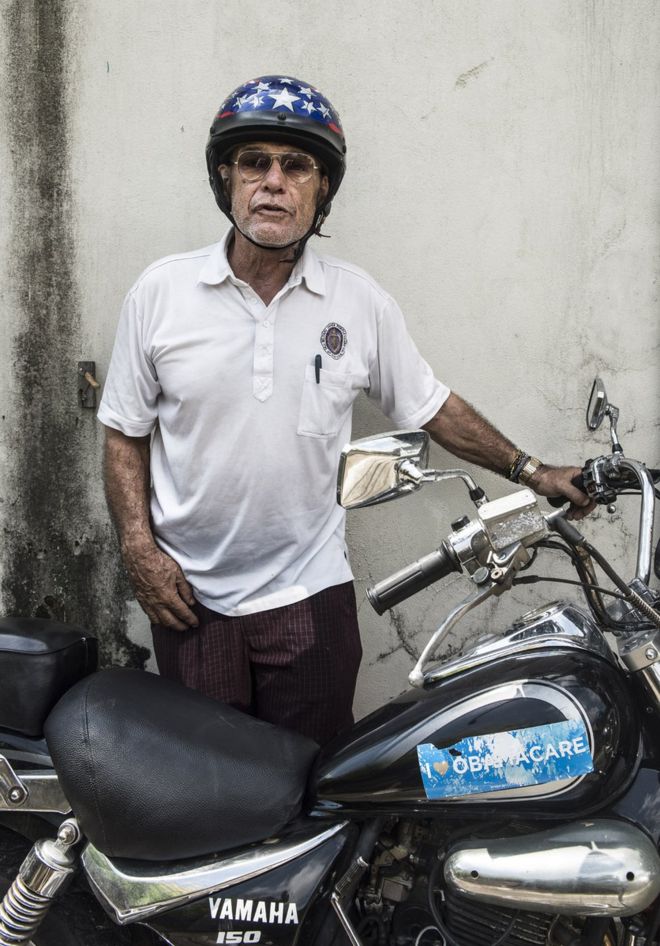 former American soldiers have gone back to the country to live. Some
had difficulty adapting to civilian life in the US. Others have gone
back in the hope of atoning for wrongs they believe were committed
during the war.
former American soldiers have gone back to the country to live. Some
had difficulty adapting to civilian life in the US. Others have gone
back in the hope of atoning for wrongs they believe were committed
during the war.
At the foot of one of Da Nang's Marble Mountains, women with rice hats walk around selling souvenirs. A lift takes tourists to the top, where on one side they look out over the countryside of central Vietnam, on the other the South China Sea.
In 1968 David Edward Clark was camped behind these mountains, but then it was impossible to climb them, the 66-year-old says. Anyone doing so would be a sitting duck for the Vietcong camped nearby.
"We even had the rule that you would never leave the camp without a gun," says Clark. "So I walked around with an M16 all day. And I put that thing in the face of every Vietnamese I encountered. Men, women and children. I wanted them to be scared of me. That would give me a bigger chance to survive."
Forty years later Clark came back to Vietnam, this time not to fight Communists, but to build a new life. Clark is one of about 100 American veterans, maybe more, who have established themselves in Vietnam. Many of them live in and around Da Nang, the city where the US had its busiest military airfield during the war and where the first American troops arrived in 1965.
Back in the US, after the war, not a day went by without thinking of
Vietnam, says Clark, who hides his eyes behind a big pair of
sunglasses. "I often woke up, bathing in sweat. I saw people when
they weren't there. Once I got up in the middle of the night,
planning to place ambushes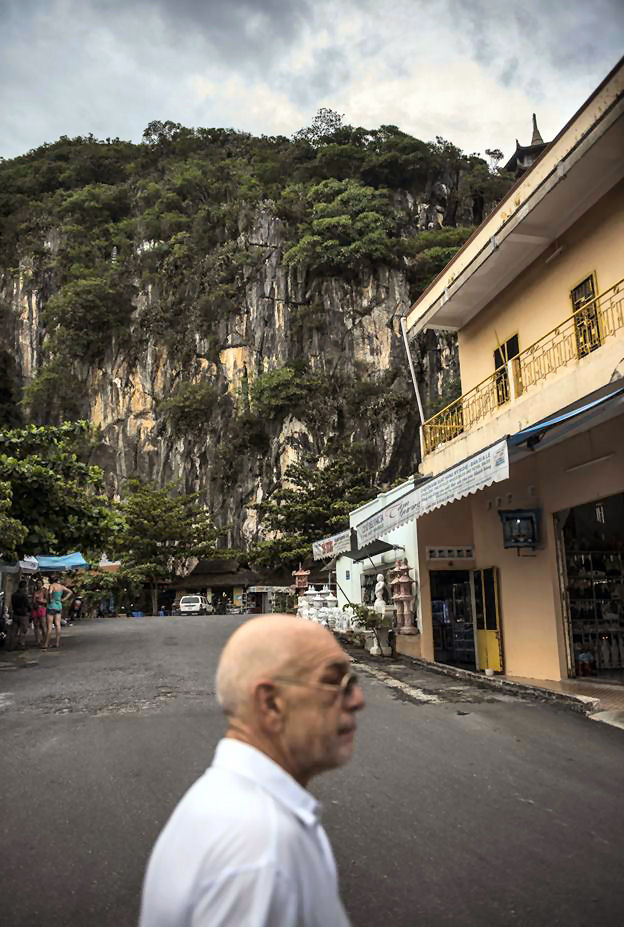 around my house, because I thought the Vietcong were coming to get
me. The only way I could escape from these memories was by getting
drunk. So I drank way, way too much."
around my house, because I thought the Vietcong were coming to get
me. The only way I could escape from these memories was by getting
drunk. So I drank way, way too much."
In 2007, Clark finally managed to take a step back. For this he had to go back to the mountain that separated his platoon from the enemy and for the first time in his life he climbed all the way up. "On the top I had a feeling of peace I never had before. There were no more bombs, there was no more fighting, there were no more jet fighters flying over. Then I realised the war is over."
It's estimated that tens of thousands of veterans have returned to Vietnam since the 1990s, mostly for short visits to the places where they once served. Decades after the fall of Saigon (now Ho Chi Minh City) many former soldiers still wonder why they were fighting.
That also goes for Richard Parker, also 66, who says he "lost the plot" after Vietnam, and for 20 years led a life of alcohol, drugs and sex. "I was a vagabond who worked in restaurants and who went from town to town. It didn't matter to me if I was dead or alive," he says. Memories of destruction and death in Vietnam continuously haunted him. "I was so heavily brainwashed that before I went to war I wanted to kill Communists. But when I left Vietnam, I loved the people there," he says. "How were they dangerous? The only thing they wanted to do was grow rice and make babies."
For many years Parker suffered from post-traumatic stress disorder,
a disease that today affects 11% of Vietnam veterans. Tens of
thousands have committed suicide. For Parker the only way to put his
demons to rest was to return to Vietnam. "Here I found, more or
less, peace with myself. Sometimes I go to a place where we used to
fight. What was chaos and destruction at the time, is now a hopeful
place full of life."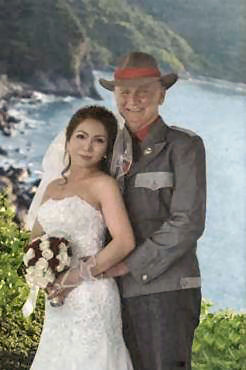
Another veteran, Larry Vetter works for Child of War Vietnam, a website that aims to tell people about the legacy of the Vietnam War. Both American and Vietnamese flags hang in his spacious house. Above the sofa there is a wedding portrait - this summer, the 73-year-old married his Vietnamese girlfriend, Doan Ha.
When Vetter came to Da Nang in November 2012 he only intended to stay three months to help a family care for two sick boys apparently suffering from the effects of Agent Orange, a chemical herbicide used by the US military to kill trees and shrubs, which is still causing cancer, deformities and paralysis today.
"I have the feeling that we need to restore some things," says Vetter, who is known to his friends as Captain Larry. "The US government refuses to do that, so I'm here to do my part."
It was partly a sense of guilt that led Vetter to stay in Vietnam after the three months were over. "There's a closet in my head that I don't want to open, because I fear of what comes out of it. I don't know exactly what's in there, but every now and then the door opens a bit and I get bad dreams. Maybe this closet is the reason I'm in Vietnam. We have done so many stupid things here."
Chas Lehman, a man in his 70s with a white beard and dark sunglasses, describes his return to Vietnam as the will of God. It was conversion to Christianity, he says, that saved him from falling into a black hole of depression, disillusion and post-traumatic stress disorder.
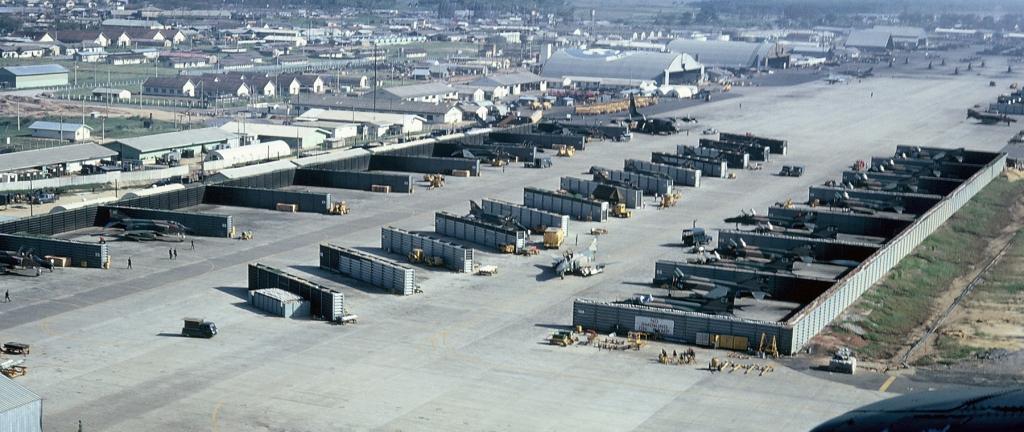
Da Nang airbase was originally a French Air Force base and was established in the 1930's. During the Vietnam War it was a major base with the US Army, US Air Force and the US Marines stationed there.
"When I was sent to Vietnam, the mission seemed simple: I had to prevent the free South Vietnam from becoming a slave of the Communist North. But from the time I arrived on Vietnamese soil, I knew this wasn't right and that I had to get out of here," he says. "Back in the US everything felt meaningless. I was like a piece of the puzzle that didn't fit in."
Together with other volunteers Lehman distributes food, drinks, clothing and blankets to needy minority groups in Vietnam's Central Highlands. On a single trip they can assist 65 to 300 families. "During the war, I felt sorry for the people in Vietnam, but I couldn't trust them. Now I feel affection for them," he says.
Returning to Vietnam is a way to end frozen memories, says Richard Parker. "As long as you don't return, you will remember Vietnam as the country of the war." Although he sometimes teaches English, most of the former vagabond's days are a simple pattern of reading, walking, talking with friends and enjoying Vietnamese cuisine.
His eyes light up when he explains how Vietnam has made him a happy man again. He laughs a lot these days. "And the Vietnamese show respect for me, even more respect than I get as a veteran in the US," he says. David Clark would like to see more veterans coming back to Vietnam. He himself came back several times after his first trip. During a motor bike journey from north of the country to the south something else happened that he would never have expected in 1968 - he fell in love with a Vietnamese woman. They married two years ago. The veteran takes a deep breath. He takes off his sunglasses, wipes away a tear. His voice breaks. "I used to think the Vietnamese were the dirtiest, lowest scumbags in the world. But now I feel blessed for living here. I know this is where I have to be. The war is over, and I will die here."
In his living room Larry Vetter shows me a picture on his laptop. There he is, a young twenty-something man in a helicopter, at the end of the 1960s. Beneath him is the Vietnamese jungle, next to him a soldier with a machine gun. "After the war I had a lot of questions, but there was no-one who gave me answers," says Vetter. "So I went to study myself. And the more I read, the less I understood about why we were sent to Vietnam. I found out how much they lied to us and thought to myself: 'If I were Vietnamese, I would have fought with the Vietcong."
From the kitchen his wife, Doan Ha, looks at him lovingly. Captain Larry may be much older and may have memories of Vietnam that she will never fully understand, but she loves him. "He has a good heart," she says. "Not just for me, but for everyone."
DVA and the Federal Budget.
The 2016-2017 Federal Budget, handed down on the 3rd May, allocated $11.7 billion to run DVA for the year. This is down from the $12.1 billion allocated last year and will support around 298,000 clients (veterans and dependants) which is down from 311,000 clients last year.
This funding comprises $6.4 billion for income support and compensation and $5.2 billion for health services. $93.6 million has been allocated to commemorations.
The total number of persons receiving income support or a compensation pension from the Department of Veterans' Affairs as at March 2016 was as follows:
|
Veteran Service Pensioners. |
6,2705 |
|
Partner/Widow(er) Service Pensioners |
57,755 |
|
Total Service Pensioners |
120,460
|
|
Income Support Supplement recipients. |
53,453 |
|
|
|
|
Social Security Age Pensioners. |
3,573 |
|
|
|
|
Commonwealth Seniors' Health Card holders. |
4,486 |
|
|
|
|
Disability Pensioners receiving Income Support.* |
46,034 |
|
Disability Pensioners not receiving Income Support. |
47,403 |
|
Total Disability Pensioners. |
93,437
|
|
War Widow(er) Pensioners receiving Income Support. * |
53,505 |
|
War Widow(er) Pensioners not receiving Income Support. |
17,884 |
|
Total War Widow(er) Pensioners. |
71,389
|
|
Orphan Pensioners. |
151
|
|
Net Total ** |
244,273 |
(*) 'Income Support' includes Service Pension, Age Pension or Income Support Supplement.
(**) Components do not add to total due to overlaps.
In March the following number of Health Care cards in use, compared to the same time last year, was as below:
|
Card |
March 2015 |
March 2016 |
|
Gold |
155,644 |
145,955 |
|
White |
54,843 |
56,164 |
You can read the full DVA budget paper HERE.
Having a cold drink on hot day with a few friends is nice,
but having a hot friend on a cold night after a few drinks can be priceless.
Amalgamation of DVA and Department of Human Services (DHS) Offices and Responsibilities.
Have a look at
http://www.dva.gov.au/new-service-delivery-arrangements-toowoomba-region.
That will take you to the DVA information page. There is also an
announcement about the establishment of one at Geelong and Wodonga
as well.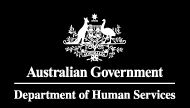
Without trying to be too alarmist and reactionary, it seems that this is another example of veterans being lumped in with those who certainly don’t warrant being given the same consideration as veterans. Having worked in the CES/ Centrelink and been a client, although some time ago, I am extremely concerned and apprehensive about this development and the treatment that veterans will be given.
The potential demeaning of those who certainly need to be treated with dignity and given, in many case special consideration is very real. I can just imagine how a number of the veterans and/or their families who I’ve dealt with recently will react if they are subjected to the environment that exists in some of these agencies. I can’t imagine that there will be any improvement in this scenario particularly with those who are seriously emotionally and psychologically impaired who now won’t engage with DVA or stop engaging with DVA because of its bureaucracy.

I could go on about it but I encourage anyone who hasn’t been exposed to what it’s like go to your local Centrelink/ DHS Service Office (CES) to go and see for yourself! This has been a concern of mine for some time and now it seems to be occurring! I don’t trust the Government’s intentions and although they say that there will be a commitment to valued service etc, I’m not convinced that will occur. How many times have we heard that the services in the jobless and social security programs and process are smooth and provide an efficient service to the community!
For example will this mean that in future we can anticipate that instead of individual and specialised rehabilitation return to work programs being run by professional providers, the processes and programs will become the responsibility of Centrelink/ DHS?
God help us!
Re the consultation with the local community and ESO’s again I wonder who has been consulted?
I’ve not been made aware of this but then again I must be a mushroom because in recent times I’ve received no advice from DVA or senior ESO’s about any potential changes or their respective implementation. A recent example of that was the relocation and centralisation of DVA’s responsibilities to various states.
I’ve experienced several examples of how this is now creating a nightmare for advocates, pension/welfare officer and I assume for a great number of veterans particularly in the WEST because of the time difference and staff’s lack of knowledge of local matters, locations etc.
Of course the local community would prefer to have same services as veterans, cynically I believe that anything to improve what happens in these centres would be an improvement and obviously improve the lot of those that currently use Centrelink/DHS, does that mean that a veteran and/or his family have to line up along with all the others using the DHS services to get a number and wait until he/ they are called sometime later?
Apparently this new arrangement has been or is already being extended to 20 other sites.
If you have been involved in the consultation process and believe that this may be workable then I strongly recommend that you go to your local Centrelink/DHS Office and stand in the queue and imagine what it’s going to be like for veterans and their families.
For those of you who can comment, speak about this development and/or have already done so in the appropriate forums then I implore you to reconsider your support for it and/or stop it. It is outrageous and I think is symptomatic of what the politicians and senior public service think of veterans.
Moreover it will do very little to enhance the view of veterans amongst the community which as you are aware is not all that flash in many forums already!
JOHN BURROWS.
Redeveloping the mighty F-4 Phantom II
into a Mach 3+ Fighter/Spy Plane.
The F-Few aircraft in history have flown to the same level of distinction as McDonnell Douglas’ F-4 Phantom II.
It was the jet that ushered in a new age of fighter aviation,
proving itself on the front lines in a number of different conflicts
with a variety of air forces around the world. As with any aircraft,
regardless of its military or civilian purposes, early Phantoms came
with their share of failings and faults. Further development led to
the F-4E variant of the ugly fighter-bomber, widely regarded as the
best all-around iteration of the Phantom. The Rhino, as US Air Force
aircrew liked to call it, came with a capable AN/APQ-120 radar, two
very powerful (and improved) General Electric J79 engines that could
push it to Mach 2.2, and an internal M61 Vulcan cannon which
previous Phantoms lacked (and sorely needed). The US began shopping
around the Rhino in the late 1960s and ’70s, and interest was
quickly generated among prospective buyers. Eleven countries, other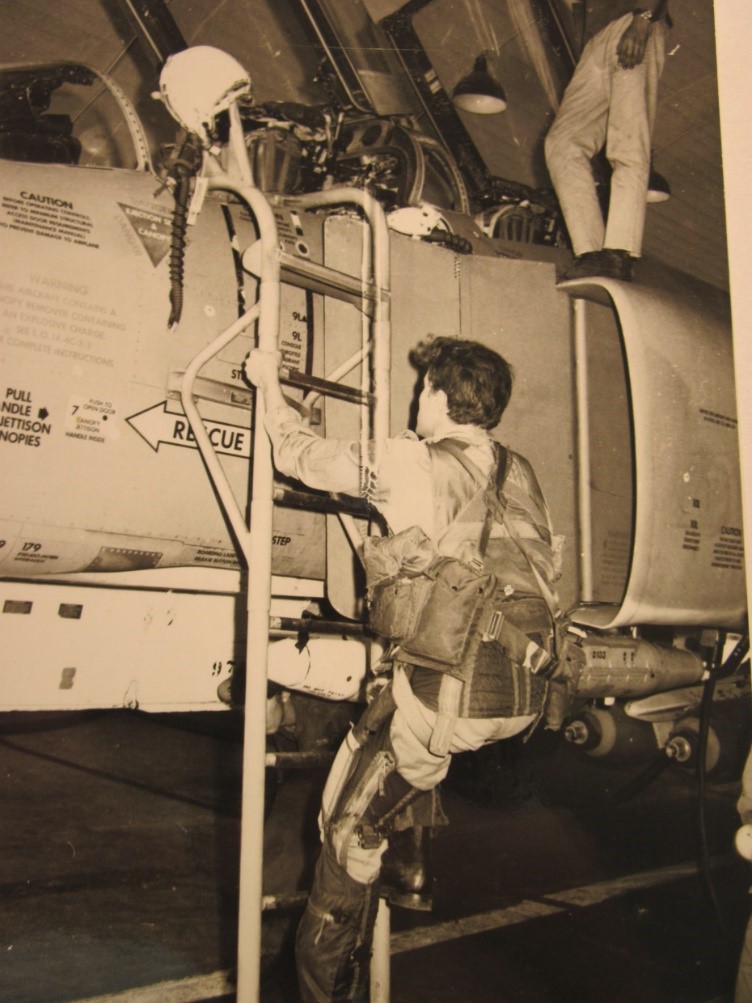 than the United States, wound up operating the Rhino, with Israel
being one of the bunch, having bought a set of F-4E and RF-4E
(recon) Phantoms for the Israel Air Force (IAF) beginning in 1969.
than the United States, wound up operating the Rhino, with Israel
being one of the bunch, having bought a set of F-4E and RF-4E
(recon) Phantoms for the Israel Air Force (IAF) beginning in 1969.
An Israeli pilot climbing into a
F-4E Phantom II
during the Yom Kippur War.
Known as the Sledgehammer in Israel, the IAF fighter jocks who flew it found the F-4E to be just as fast and versatile as they needed it. With a bit of training and tactics development, they could dish out a world of hurt and then some to the Soviet export fighters flown by Arab nations including Egypt and Jordan. The RF-4E Raven afforded Israeli Defence Force commanders a much-needed (though very limited) aerial reconnaissance capability that they otherwise lacked. The IAF didn’t possess high-flying SR-71 Blackbird or U-2 Dragon Lady spy planes, nor were satellites with photographic capabilities available to them at the time. Their requests to buy the Martin RB-57F Canberra, outfitted with the revolutionary General Dynamics HIAC-1 camera system, were constantly rebuffed by the US State Department, with the reason being that selling Israel such technology would have likely thrown off a supposedly carefully-crafted strategic balance in the Middle East.
Around the time of Israel taking delivery of the Rhinos from the United States, the surface-to-air threat that they constantly faced worsened in the late 1960s/early 1970s, thanks to Egypt’s more-than-cordial relationship with the Soviet Union. To assist the Egyptian military with bringing their anti-air crews up to proficiency standards, the USSR poured technical and military advisors into the country like vodka into shot glasses. Thus, towards the end of the 1967-1970 War of Attrition, the Egyptian military was able to set up an advanced network of SAM (surface-to-air missile) sites; terrible news for IAF pilots. Any pilot that stayed too long within the SAM station’s radar ranges found themselves on the run just seconds later after being alerted to a missile launch in their general direction.
Israeli fighters were getting blown out of the sky and by mid-1970, close to the war’s end, five Israeli F-4E Sledgehammers were lost while two were written off due to being damaged beyond repair, all thanks to the Soviet-supplied SAMs. Staggering and extremely unacceptable numbers for an air force of Israel’s size (at the time).
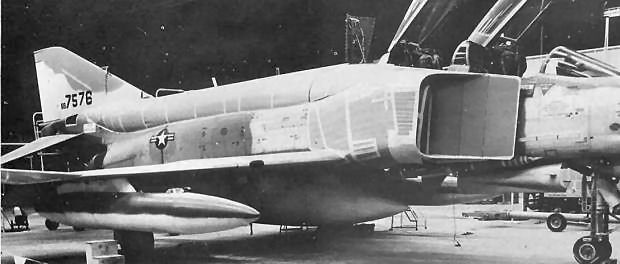
After active aerial combat ended, Israel still needed a way to monitor the Sinai region and Egypt for further SAM emplacement buildup and the RF-4E was their only available option. The Raven wouldn’t be able to function as the high-value resource to Israeli commanders that it once (briefly) was, however. Its cameras needed the aircraft to move into contested airspace for them to capture images with acceptable detail and resolution. And since it was basically just a very under-gunned version of the Sledgehammer, this meant that the RF-4E, like its armed counterpart, it would still be highly susceptible to SAMs. Israel needed an aircraft (and reconnaissance system) capable of LOROP (LOng Range Oblique Photography).
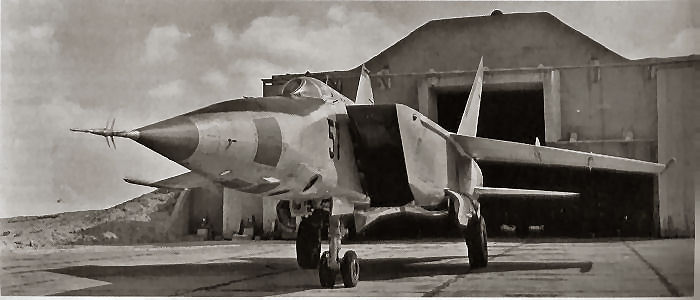
This would allow them to spy on foreign military activity from the relatively safe confines of Israeli airspace. Interestingly enough, at the same time, a bigger, badder and faster problem began taking off from Egyptian air force bases in March of 1971.
The Soviet Union posted a bunch of MiG-25R Foxbat-B recon birds to Egypt, outfitted with a suite of cameras for intelligence gathering. While it wouldn’t be actively engaging Israeli fighters (not that it realistically could, given its relative lack of armament), it would still be able to relay data on Israel Defence Force (IDF) troop positions to Egyptian intelligence officers, who would in turn be able to disseminate such vital information to aerial and ground elements, keeping them updated on Israeli manoeuvring. This was far from any ideal situation for the IAF, especially since they now needed to be able to chase the MiG-25Rs out of and away from Israeli airspace. The F-4, though a very fast jet, couldn’t really catch up to the speedy Foxbat which could normally hit Mach 2.83 with the aid of its powerful Tumansky R-15 afterburning turbojets. And if it were absolutely necessary, Foxbat pilots could push their jets to Mach 3.2, though at the cost of irreparably mangling their engines.
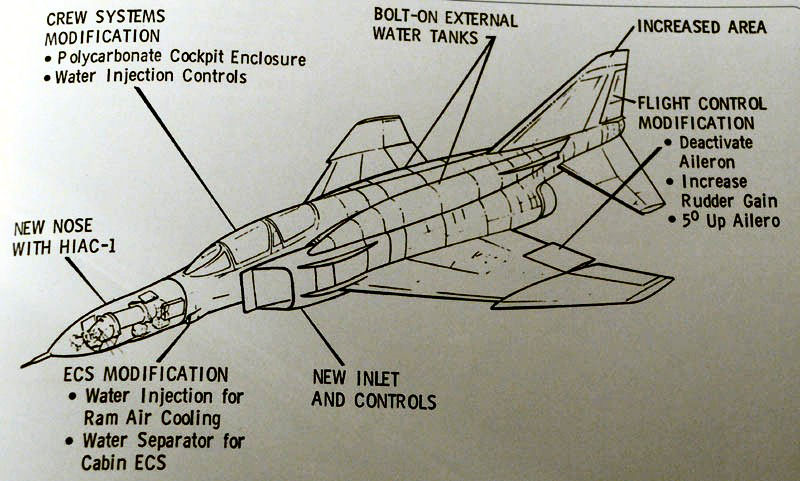
The solution to Israel’s speed issues came in the form of a proposal from General Dynamics to convert/modify existing F-4Es to a different engineering standard. The overall aerodynamics of the jet would largely remain the same, save for the inclusion of two large conformal tanks on both sides of the fuselage just above the engines, carrying around 2500 gallons of water (9600 litres).
The boffins at General Dynamics figured that the secret to lifting
the Phantom’s speed was pre-compressor cooling (PCC), where water
would be injected into the air rushing through the engine inlets on
its way to the combustion cores, reducing the temperature of the air
passing in. By cooling down the air, the mass and density would
theoretically be increased, giving the F-4 a major improvement on
its thrust output, especially at higher altitudes. The corporate
suits at General Electric, the company that designed and built the
Phantom’s J79 engines, weren’t thrilled with this suggestion but
nevertheless assisted nominally with the
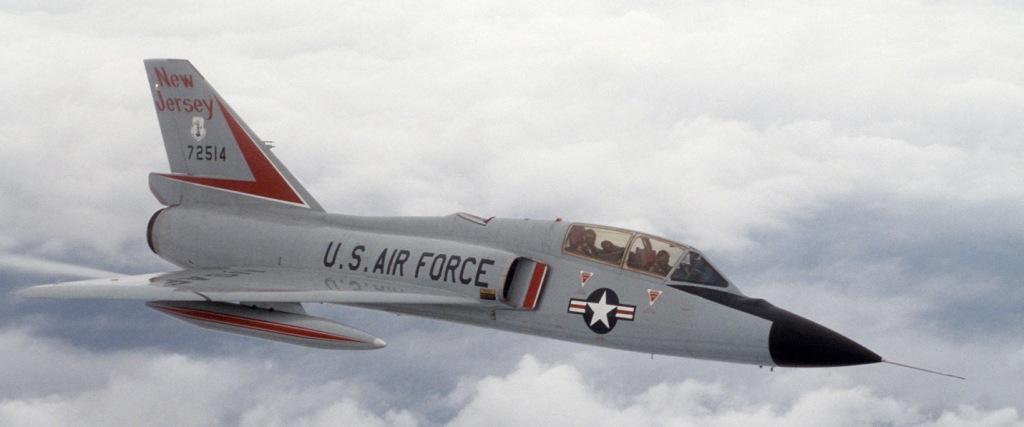 research
into the concept.
research
into the concept.
This wasn’t anything especially new General Dynamics had previously attempted something similar with the Convair F-106 Delta Dart, though the work that was put into modifying the F-106 never amounted to anything substantial. Testing done at the Arnold Engineering Development Centre, operated by the USAF, found that with pre-compressor cooling, engines could be run with the afterburner engaged for incredible periods of time (e.g. they managed to keep a J75 going with the afterburner lit for 40 hours). PCC had also been used by McDonnell Douglas when the F-4 was first built, just to help break and set a few speed records with the then-new jet, though the system installed in the early F-4 was very basic and barebones, compared to what General Dynamics wanted to do with the F-4X.
The new PCC setup for the F-4X would “mist” the water into the engine, thus preventing moisture build-up inside the engine. To make the most of PCC, the air intake inlets were redesigned with larger scoops and a redefined shape, improving the airflow moving into the compressor chambers. To help manage the airflow as efficiently as possible, controllable intake ramps were installed as well as vortex generators for both of the J79s installed. The result - an F-4 Phantom II that could fly at more than three times the speed of sound for sustained dashes, and would be able to cruise at above Mach 2.4 during missions. The fastest fighter jet ever made (that we know of).
The US Air Force quickly gave up on the concept, floated to them first by General Dynamics before Israel got wind of it; likely due to the coming of the high-performance McDonnell Douglas F-15A. While Air Force brass were unwilling to demonstrate any semblance of interest in such an idea because of the impending air superiority fighter acquisition, the State Department had a different worry in mind. At that point in history, the SR-71, flown solely by the United States, gave the US an unparalleled and untouchable intelligence-gathering capability. Allowing foreign customers, even ones with closely-held allegiances to the US, the ability to possess and operate an aircraft with such strengths as the F-4X would be a less than optimal situation.
Soviet human intelligence (HUMINT) agents would potentially garner information on the jet, or heaven forbid, actually take an F-4X for analysis, giving the USSR the opportunity to build and field a counter-aircraft that could take out the SR-71 and severely hinder the USAF/CIA’s intel program. The government immediately banned the export of the jet. Working quickly, General Dynamics removed the F-4X’s weapon systems and hard points, disarming the jet and circumventing the ban. Instead of flying as a fighter, the aircraft would be equipped with the previously-mentioned HIAC-1 LOROP camera in the nose. Dubbed the RF-4X, it wasn’t the fighter that Israel wanted, but it still fit their reconnaissance purposes well.
After securing permission to shop the RF-4X to Israel in 1974, the Israeli Air Force loaned General Dynamics an F-4E to work with as a mock-up and later, an RF-4X prototype/testbed. Physical work commenced on the RF-4X in November, soon after the aircraft’s delivery, and carried on into the next year. Cardboard and papier-mache was used to simulate the new intake/inlet architecture, as well as the large PCC blister tanks on the sides of the fuselage. The nose of the Rhino was also taken apart and modified to house the HIAC-1.
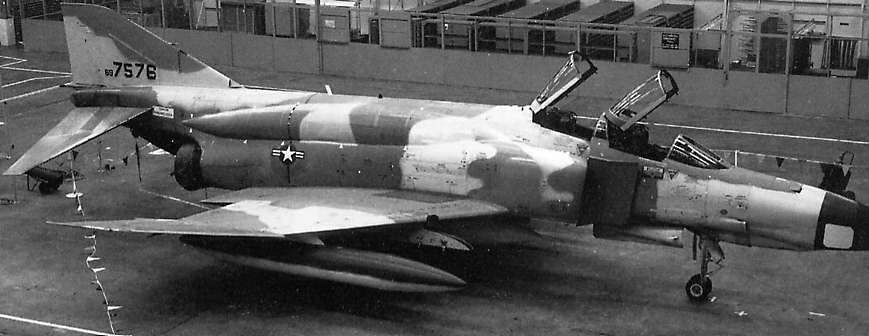
The IAF hounded General Dynamics to build the PCC system as soon as possible, since their need was urgent. However, engineers discovered that they needed far more time than what Israel had to offer. After the USAF withdrew interest from the RF-4X, the program was cut. There was no way Israel could fund such a project on its own.
The fastest Phantom in history was dead, having never flown or even proceeded past the mockup stage.
One day out on the golf course, a golfer accidentally overturned his golf cart. A very attractive woman, who lived in a villa on the golf course, heard the noise, came out onto her balcony and called out to him, Hey, are you okay? I'm fine, thanks," he replied. "You look frazzled, the woman said, Come up to my villa for a drink and I will help you get the cart up afterwards." "That's mighty nice of you," he answered, But I don't think my wife would like that." "Oh, come on, " the woman, a gorgeous brunette in a sexy bikini, insisted I can see you've cut your head, it could be serious. Let me take care of that right away, I'm a nurse. She was very persuasive....and he was weak. "Well okay," he agreed, but added, "But my wife won't like it." After she bandaged his wound, she gave him a most welcome brandy. They talked a little about golf and he discovered she was an avid golfer with a four handicap. When he confessed to a weakness in his putting, she gave him a putting lesson holding him close and intimately as she did so. Inevitably they ended up having sex. Finally he confessed, "I feel a lot better now, but I had better get going I know my wife is going to be really upset with me being here with you." "Don't be silly! the woman said with a smile, She won't know anything...by the way, where is she?" "Under the cart," he replied
Greenslopes Hospital (Brisbane)
There has been some alarming talk recently concerning Greenslopes Private Hospital.
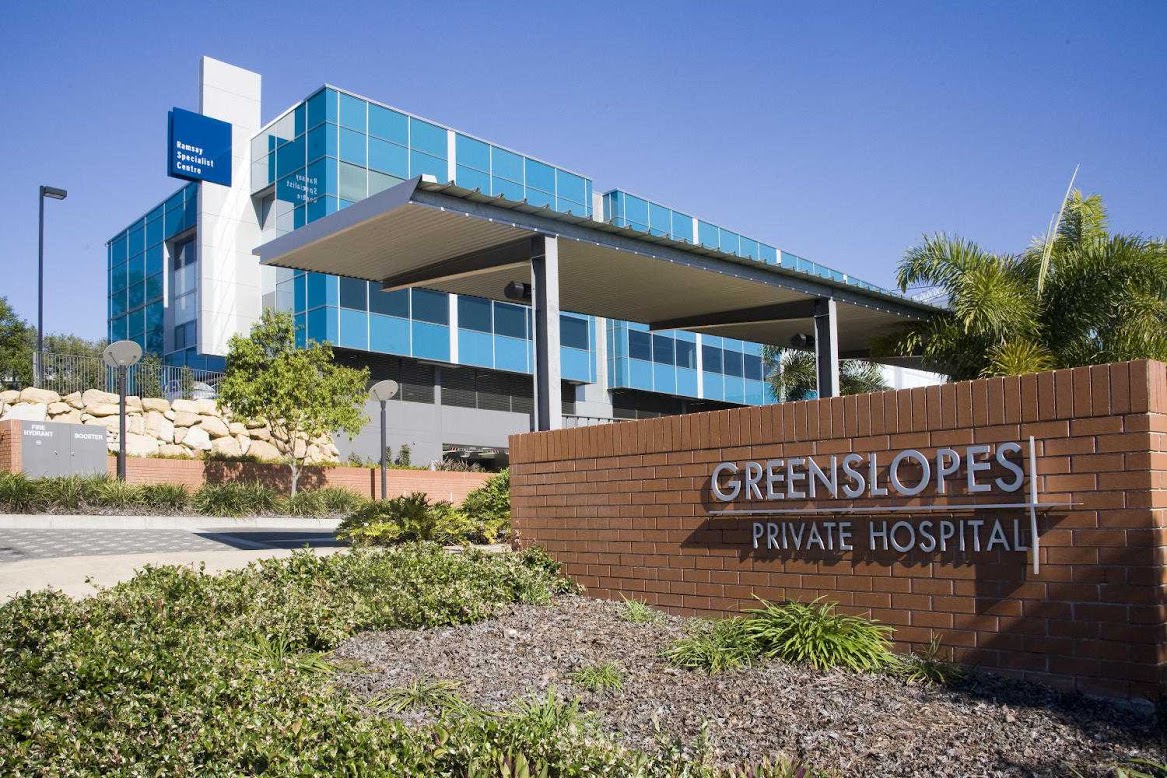
There has been reports in the press that the Hospital will be sold and will no longer provide health services to veterans and other entitled persons.
This is not true.
Greenslopes Private Hospital in Brisbane, is currently owned by Ramsay Private Health and will continue to provide hospital services to veterans and other entitled persons. The recent press article should have made clear that the Budget funding is to remediate blocks of land which were once part of the former Greenslopes Repatriation Hospital, but which the Commonwealth had leased to the Australian Red Cross from the 1940s until earlier this year. This land has now returned to the Commonwealth as vacant possession and has been determined to be surplus to the Commonwealth’s requirements. The Department is currently working through the processes to dispose of this land and not the Hospital as has been suggested.
Blessed are those who are cracked,
for they are the ones who let in the light!

Ok, Ok!! – I’m going back to my room now!!
Back Go to page: 1 2 3 4 5 6 7 8 9 10 11 12 13 14 15 16 17 18 19 20 Forward

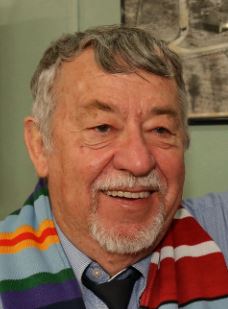

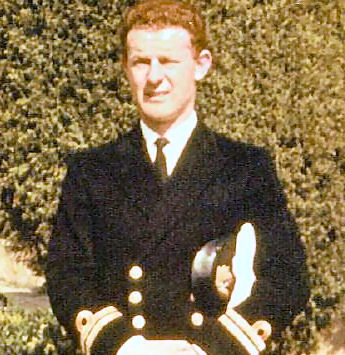 Australian Navy. He was a child in the navy where, within weeks, he
was raped and several times tortured. Over several years he
suffered constant and repeated sexual and physical assaults at the
hands of older children, who were given charge over their younger
cadets and left without adult supervision.
Australian Navy. He was a child in the navy where, within weeks, he
was raped and several times tortured. Over several years he
suffered constant and repeated sexual and physical assaults at the
hands of older children, who were given charge over their younger
cadets and left without adult supervision. 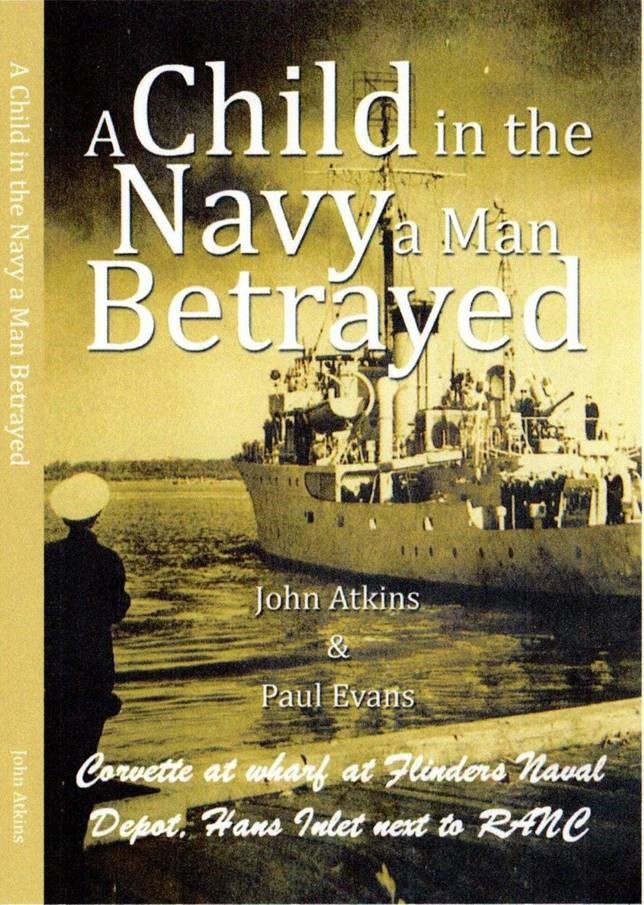 t
all he received was a mealy mouthed apology.
t
all he received was a mealy mouthed apology.